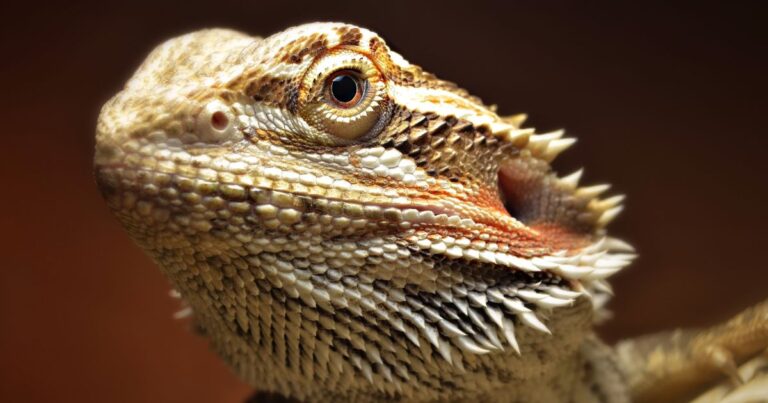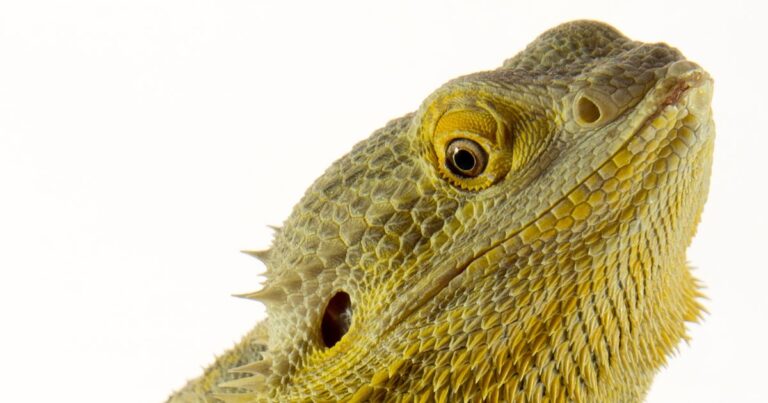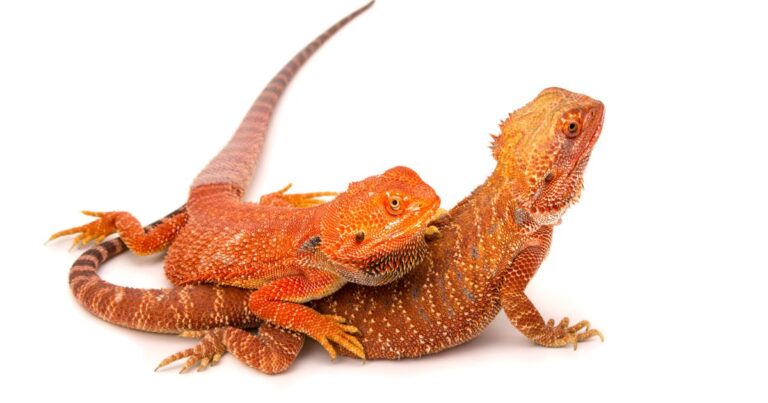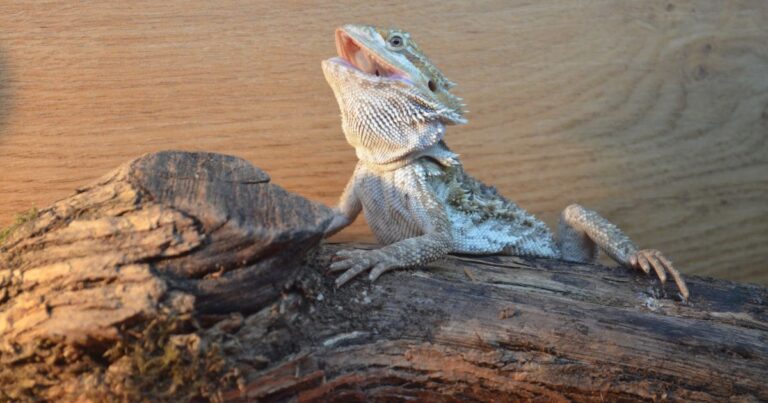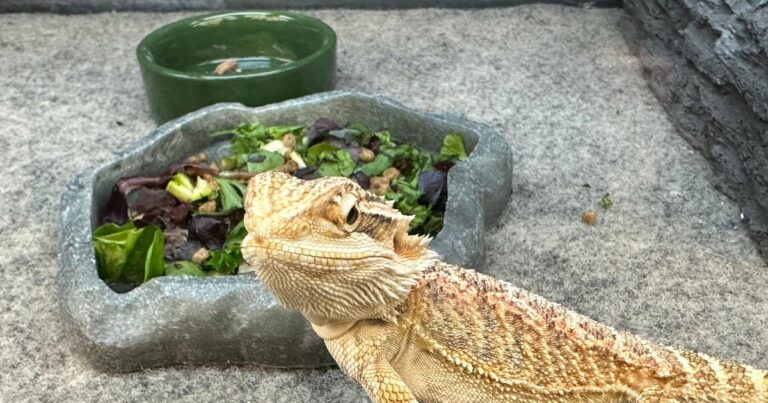Bearded Dragon’s Behavior and Training
Table of Contents
Dive into the intriguing world of “Bearded Dragon’s Behavior and Training” with us! This guide will unveil the unique behaviors of these captivating creatures and provide practical training tips. Stay tuned for an exciting journey!
Introduction
Hello, fellow reptile enthusiasts! Today, we’re diving into the fascinating world of bearded dragon’s behavior and training, or “beardies” as they’re affectionately known. These charming creatures, native to Australia, have become increasingly popular pets worldwide, thanks to their docile nature and unique behaviors. But owning a bearded dragon isn’t just about providing food and a cozy enclosure. It’s about understanding their needs, behaviors, and even training them to enhance their health and wellness.
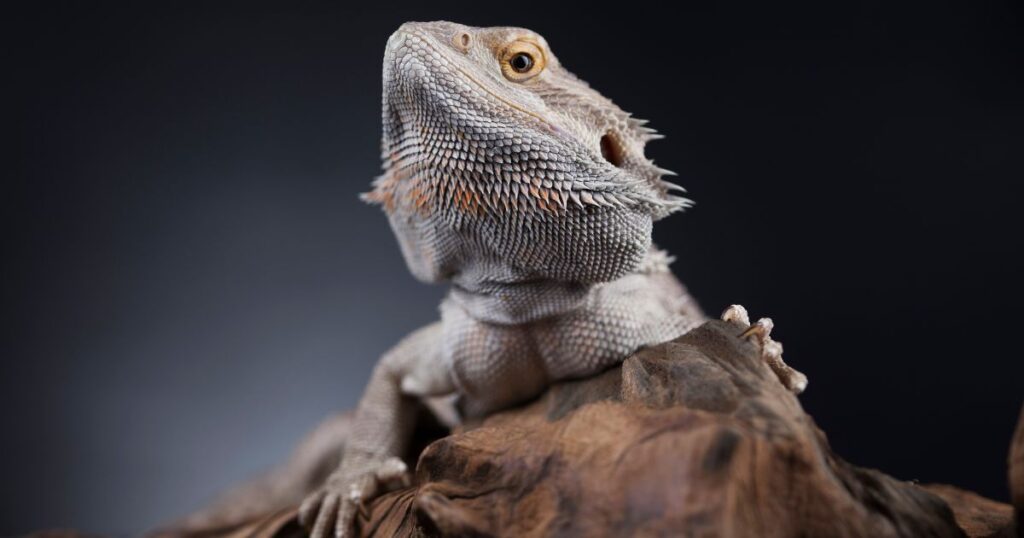
Bearded dragons are one of the most intelligent reptiles around. Friendly, good with kids, and relatively low maintenance, you can’t go wrong with a dragon if you want to start keeping reptiles.
Bearded Dragon’s Behavior: Understanding Bearded Dragons
Natural History
Bearded dragons, or Pogona vitticeps, are native to the arid and semi-arid regions of Australia. These fascinating creatures have adapted to thrive in these harsh environments, developing unique characteristics that make them stand out among other reptiles. Their natural habitat is marked by extreme temperature fluctuations, from scorching heat during the day to chilly nights. This has led to the evolution of their thermoregulatory behaviors, such as basking in the sun during the day and burrowing into the sand at night.
In the wild, bearded dragons are opportunistic omnivores, feeding on a variety of insects, small rodents, and plant matter. This adaptability to their diet is a testament to their survival skills in the harsh Australian outback. When kept as pets, it’s essential to replicate this varied diet to meet their nutritional needs, which can contribute significantly to their overall health and wellness.
Special Characteristics
One of the most distinctive features of bearded dragons is their “beard” – a flap of skin under the chin that they can puff up when threatened, during courtship rituals, or when they are trying to assert dominance. This, coupled with their ability to change color based on their mood or temperature, makes them a truly unique species to care for. Their color-changing ability is not only a fascinating spectacle but also a vital form of communication, signaling their emotional state and overall health.
Bearded dragons also have a unique set of physical adaptations that aid in their survival. Their spiky scales, which give them their ‘bearded’ appearance, act as a deterrent to predators. Their robust, muscular legs enable them to run quickly and climb effectively, while their broad, triangular heads provide ample space for powerful jaw muscles, aiding in their omnivorous diet. Understanding these special characteristics is crucial in providing optimal care for your bearded dragon.
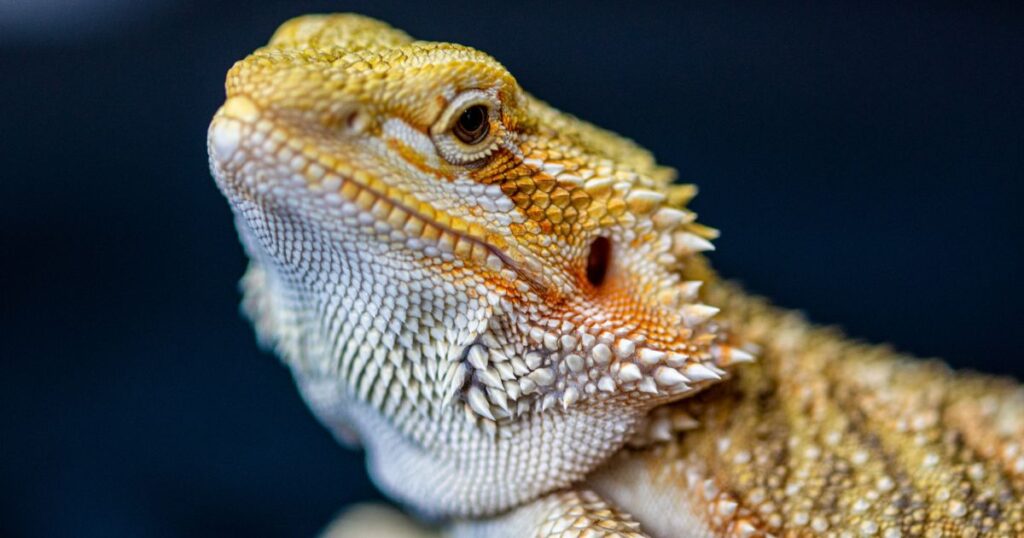
Temperament and Behavior
Bearded dragons are renowned for their docile and friendly temperament, making them popular pets worldwide. Unlike some reptiles, bearded dragons are quite sociable and can form strong bonds with their owners. They are often seen basking in the light, exploring their surroundings, or even interacting with their owners. This sociability, combined with their relatively easy care requirements, makes them an excellent choice for both novice and experienced reptile enthusiasts.
Behavior-wise, bearded dragons exhibit a range of interesting mannerisms that serve as a form of communication. From the adorable arm-waving, which is often a sign of submission, to the more assertive head-bobbing, which can signal dominance or aggression, understanding these behaviors can help you better care for your bearded dragon. Recognizing these behaviors and responding appropriately is key to ensuring your bearded dragon’s health and wellness, and can significantly enhance the bond you share with your pet.
Ever wondered why your bearded dragon bobs its head or waves its arm? In this article, we’ll decode the fascinating world of bearded dragon behaviors. From head bobbing to glass surfing, you’ll learn what these behaviors mean and how they help our scaly friends communicate. So, let’s dive in! Bearded Dragon Behaviors: A Peek into Their World
In my post on Decoding Bearded Dragon Body Language, I delve into the meaning behind common bearded dragon postures and actions. I explore why your bearded dragon might puff up its beard, wave its arm, or change its color. This understanding can help you respond appropriately to your pet’s needs and ensure their well-being.
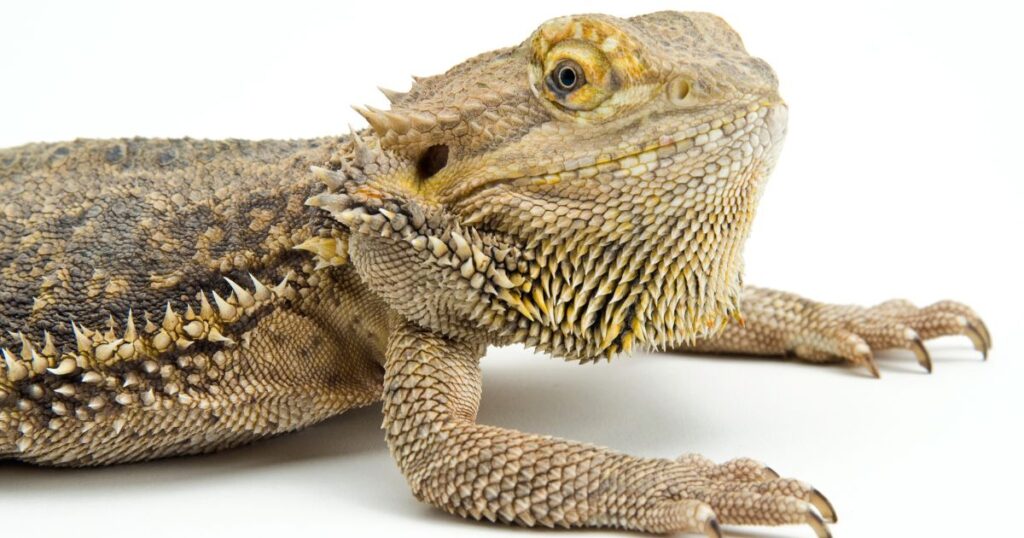
Training Bearded Dragons
Bearded dragons are social creatures, and with the right approach, they can form strong bonds with their human caretakers. Understanding how to interact with your bearded dragon, from handling techniques to recognizing their mood signs, can enhance your relationship with your pet.
Importance of Training
Training your bearded dragon is not just about teaching them tricks or commands; it’s about building a strong bond and understanding between you and your pet. Training sessions provide mental stimulation for your dragon, which helps keep them from becoming bored and restless. Moreover, it allows you to interact with your bearded dragon in a meaningful way, enhancing your relationship with them.
Training also has practical benefits. For instance, teaching your bearded dragon to come when called can be a lifesaver if they ever get loose in your house. Similarly, potty training your bearded dragon can make cleaning their enclosure a lot easier. Overall, training your bearded dragon can enhance their quality of life and make caring for them more enjoyable and less stressful.
Top 5 Tips for Training Your Bearded Dragon
- Be patient and consistent.
- Use positive reinforcement, like treats and praise.
- Start with simple commands, like name recognition.
- Make training sessions short and fun.
- Always end on a positive note to keep the training experience positive.
Building Trust and Bonding with Your Bearded Dragon
Before you can start training your bearded dragon, you need to establish trust. This process begins the moment you bring your bearded dragon home. Spend time near their enclosure, talking softly to them, and offering treats. This helps your bearded dragon get used to your presence and voice, laying the foundation for future training sessions.
Bonding with your bearded dragon is a gradual process. It involves handling them regularly but gently, respecting their boundaries, and learning to read their body language. Remember, each bearded dragon is unique and will bond at their own pace. Patience, consistency, and positive reinforcement are key to building a strong bond with your bearded dragon.
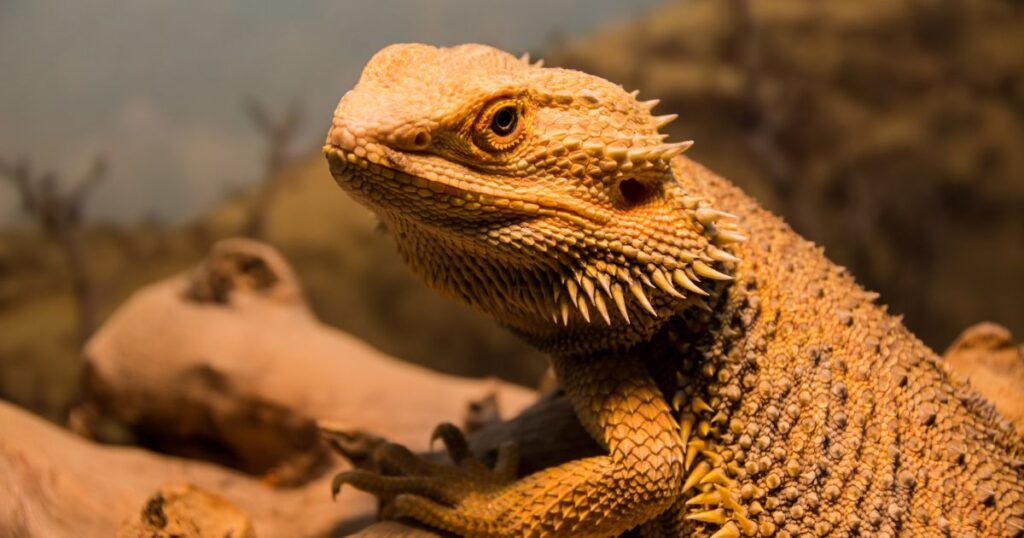
Training Your Bearded Dragon to Recognize Its Name
One of the first steps in training your bearded dragon is teaching them to recognize their name. This is a simple but crucial part of training as it forms the basis for other commands. Start by saying their name each time you interact with them, especially during feeding times. Bearded dragons are smart and will soon start to associate the sound of their name with positive experiences.
To reinforce this association, you can use a technique called “name conditioning.” This involves saying your bearded dragon’s name, then immediately offering a treat. Repeat this process several times during each training session. Over time, your bearded dragon will start to respond to their name, even without the promise of a treat. This is a clear sign that they recognize their name and are ready for more advanced training.
Can Bearded Dragons Recognize Their Owners? Ever wondered, ‘Can bearded dragons recognize their owners?’ Well, the short answer is yes, they can! But how do they do it, and what does it mean for you and your scaly friend? Stick around as we dive into the fascinating world of bearded dragons and their amazing abilities. Trust me, it’s going to be a wild ride!
Training Your Bearded Dragon to Come When Called
Once your bearded dragon recognizes their name, you can start training them to come when called. This command is particularly useful for managing your bearded dragon outside their enclosure. Start by calling their name and rewarding them with a treat when they come to you. Be consistent and patient, as this process may take some time.
Remember to always reward your bearded dragon’s efforts, even if they only make a small move in your direction. Over time, increase the distance between you and your bearded dragon, encouraging them to come further when called. With persistence and positive reinforcement, your bearded dragon will soon learn to respond to this command, enhancing your ability to interact with them and ensuring their safety when they are out of their enclosure.
Are Bearded Dragons Solitary? Well, let me tell you, my bearded dragon, Gilbert, would rather sunbathe alone than share his basking spot! Yes, bearded dragons are solitary creatures. Stick around to discover why, and how this shapes their care and behavior!
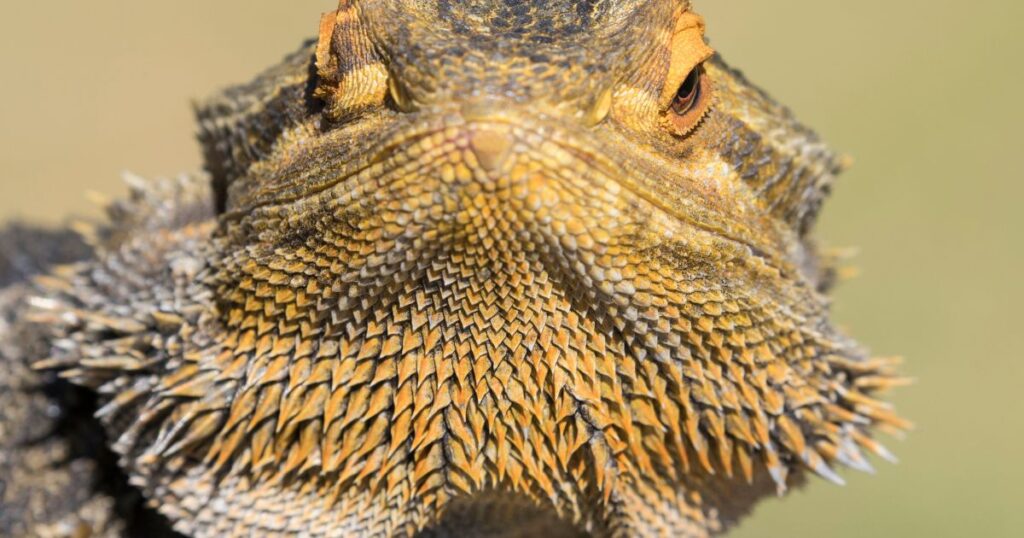
Bearded Dragon Training Steps
| Training Step | Description |
|---|---|
| Name Recognition | Repeat their name often, especially during feeding time. |
| Coming When Called | Start by calling their name without immediately feeding them. Reward them with food when they come. |
| Leash Training | Introduce the leash slowly and let them get used to the feel of it before trying to lead them. |
Advanced Training for Bearded Dragons
Once your bearded dragon is comfortable with basic commands, you can move on to advanced training. This can include potty training, which can make cleaning their enclosure a lot easier. Another useful skill is leash training your bearded dragon. This can allow you to take them outside for natural sunlight, which is beneficial for their health.
Potty Training Your Bearded Dragon
Believe it or not, bearded dragons can be potty trained. This not only makes cleaning their enclosure easier but also reduces the risk of bacterial infections. To potty train your bearded dragon, first, observe their bathroom habits. Most bearded dragons have a specific area in their enclosure where they prefer to do their business.
Once you’ve identified this spot, place a small container or tray there. This will serve as their designated bathroom. Every time your bearded dragon uses this spot, reward them with a treat and praise. If they go elsewhere, gently move them to the designated area. Over time, your bearded dragon will learn to associate this spot with bathroom breaks. Remember, patience and consistency are key. It may take a few weeks, but with persistence, your bearded dragon will get the hang of it.
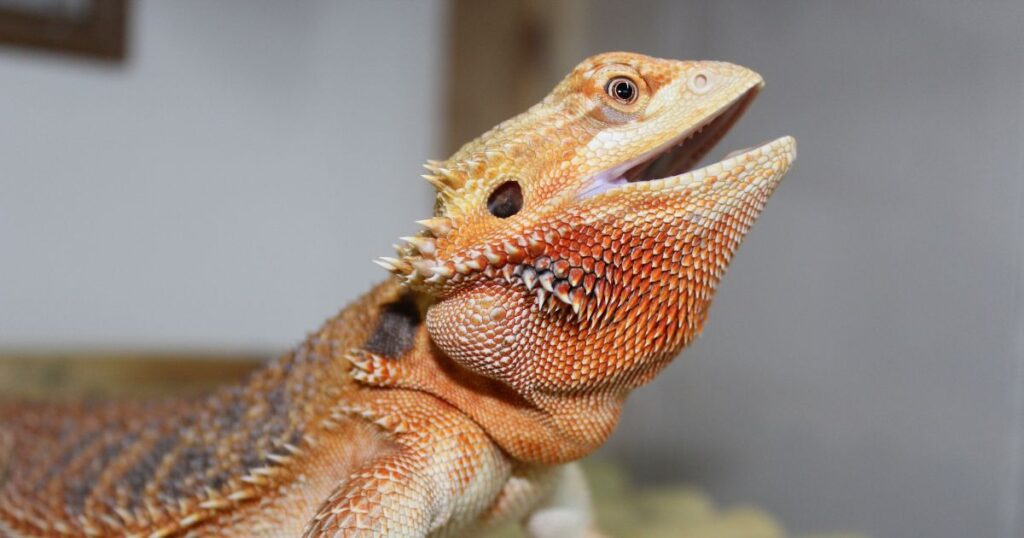
Training Your Bearded Dragon to Walk on a Leash
Walking your bearded dragon on a leash is a great way to give them some exercise and enrichment. However, it’s important to remember that not all bearded dragons will take to a leash. Start by getting a leash that’s specifically designed for reptiles, ensuring it’s the right size for your bearded dragon.
Introduce the leash slowly. Let your bearded dragon see and smell it first. Then, gently put it on them, but don’t try to lead them just yet. Let them get used to the feel of the leash. Once they seem comfortable, you can start guiding them around with the leash. Always use gentle, non-forceful movements. If your bearded dragon resists or seems stressed, stop and try again another day. With patience and positive reinforcement, your bearded dragon can learn to walk on a leash, opening up a new world of exploration for them.
Training your bearded dragon not only teaches them to follow your commands, but it also allows you to build trust and establish a tight bond with your beardie.
Conclusion
Owning a bearded dragon is a rewarding experience. These intelligent and sociable creatures can bring joy and companionship to any household. By understanding their needs and investing time in training, you can ensure your bearded dragon leads a healthy and fulfilling life. Remember, a well-cared-for bearded dragon can be your loyal companion for up to 10 years or more. So, here’s to many years of fun and companionship with your bearded dragon!
Disclaimer: This article is intended for informational purposes only. It’s not a substitute for professional veterinary advice. Always consult with a qualified veterinarian or a bearded dragon expert for specific advice related to your pet’s needs.
Stay tuned for more posts in this category, where we’ll delve deeper into understanding bearded dragon behavior, socialization techniques, and training tips. If you have any questions or want to share your own experiences with bearded dragon behavior and training, feel free to leave a comment. Until next time, dragon lovers!
Call to Action
Ready to delve deeper into the fascinating world of bearded dragons? Visit our Behavior and Training category for more insightful articles. Don’t forget to check out our previous post on Bearded Dragon Behaviors: A Peek into Their World to further enhance your understanding. Let’s continue this exciting journey together!
Frequently Asked Questions
Are bearded dragons easy to train?
Yes, bearded dragons are relatively easy to train compared to other reptiles. They are intelligent and can learn to recognize their name, come when called, and even perform simple tricks.
Are bearded dragons happy alone?
Bearded dragons are solitary creatures in the wild and are generally happy to be alone. However, they do enjoy interaction with their human caregivers.
Can a bearded dragon be potty trained?
Yes, with patience and consistency, bearded dragons can be potty trained. They often choose a specific spot in their enclosure to do their business, which can be used to your advantage during training.
Can bearded dragons love owners?
While bearded dragons may not experience love in the same way humans do, they can form strong bonds with their owners and show signs of recognition and trust.
Do bearded dragon bites hurt?
A bearded dragon bite can hurt, especially from an adult, but it’s not usually serious. However, any bite should be cleaned and treated promptly to prevent infection.
Do bearded dragons ever get bored?
Bearded dragons can get bored if they are not provided with enough mental and physical stimulation. Regular interaction, a varied diet, and an interesting enclosure can help keep them entertained.
Do bearded dragons like to be picked up?
Many bearded dragons do enjoy being handled once they are used to it. However, it’s important to handle them gently and correctly to avoid causing them stress or injury.
Do bearded dragons like to sit with you?
Yes, bearded dragons often enjoy sitting with their owners. They appreciate the warmth and will often sit quietly on your lap or shoulder.
How do bearded dragons show anger?
Bearded dragons show anger or stress by puffing up their beard, opening their mouth wide (gaping), and changing their color to a darker shade. They may also hiss or wave their arms.
How do I calm my bearded dragon?
Calming a bearded dragon can often be achieved by handling them gently, speaking softly, and providing a calm and quiet environment. If they are showing signs of stress, it may be best to give them some space.
How do I know my bearded dragon is happy?
A happy bearded dragon will have bright, clear eyes, a good appetite, and will be active and alert. They may also show signs of contentment like closing their eyes when you pet them.
How do you bond with a bearded dragon?
Bonding with a bearded dragon involves spending time with them, handling them gently and regularly, feeding them by hand, and talking to them in a calm, soothing voice.
Should you touch your bearded dragon?
Yes, touching and handling is an important part of bonding with your bearded dragon. However, always wash your hands before and after, and handle them gently to avoid causing stress or injury.
What do bearded dragons enjoy the most?
Bearded dragons enjoy a variety of activities, including exploring their environment, basking under their heat lamp, eating a varied diet, and interacting with their human caregivers.
Why is my bearded dragon hissing at me?
Hissing is a sign of fear or stress in bearded dragons. If your bearded dragon is hissing at you, it may be scared or uncomfortable. Try to identify and remove any potential stressors, and give your dragon some space to calm down.
Are bearded dragons happy in captivity?
Bearded dragons can be very happy in captivity if their needs are met. This includes a proper diet, a suitable habitat, regular interaction, and good veterinary care.
Do bearded dragons recognize their owners?
Yes, bearded dragons can recognize their owners. They can learn to associate their owner’s voice and appearance with food, warmth, and security.
How long does it take for a bearded dragon to trust you?
The time it takes for a bearded dragon to trust you can vary. It might take a few weeks to a few months of consistent, positive interaction.
Can bearded dragons learn tricks?
Yes, bearded dragons can learn simple tricks. For example, they can be trained to come when called, or to eat from your hand.
What should I do if my bearded dragon is acting aggressive?
If your bearded dragon is acting aggressive, it’s important to identify and address any potential causes of stress or discomfort. This could be anything from a health issue, to a problem with their habitat, to feeling threatened by a person or another pet.

